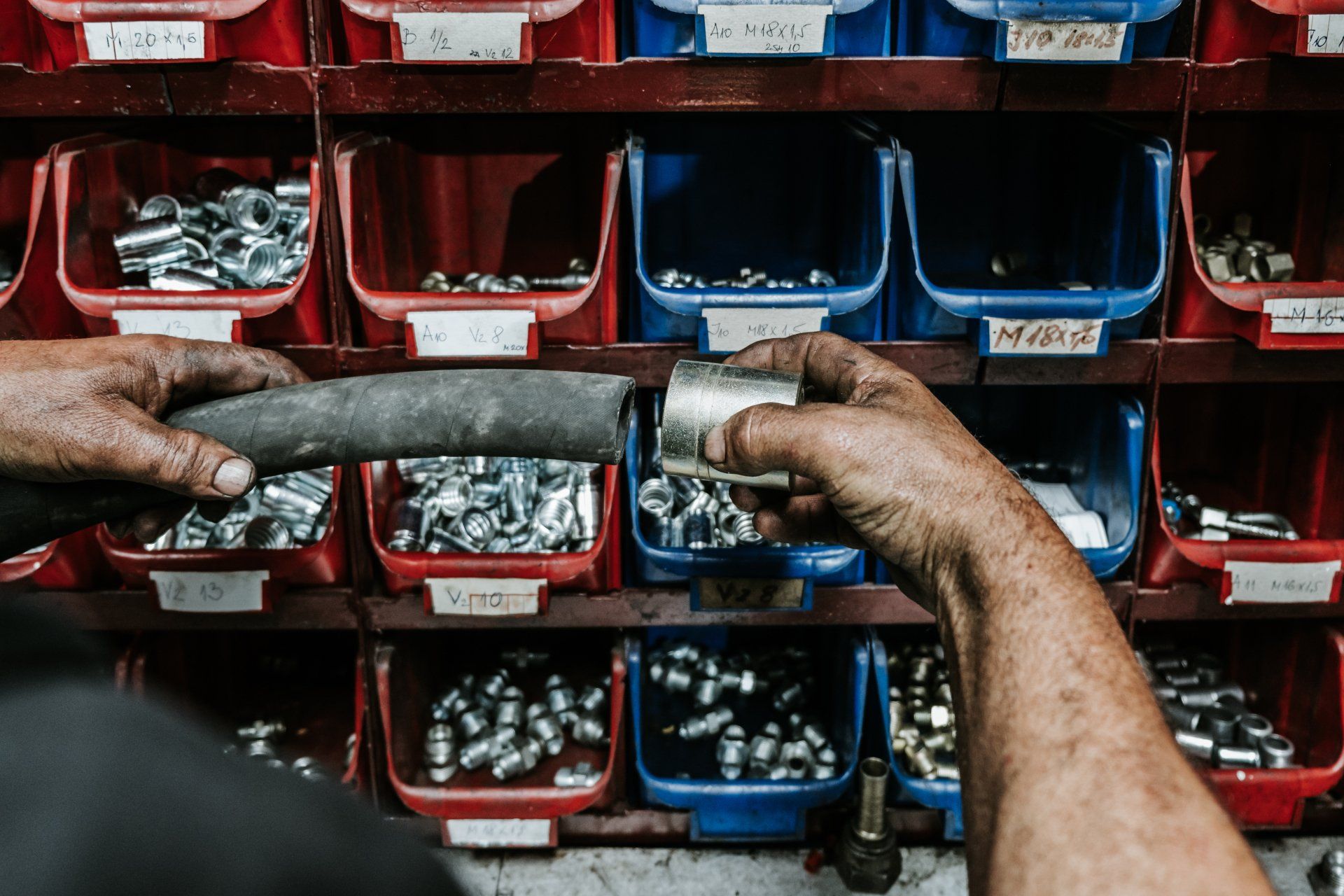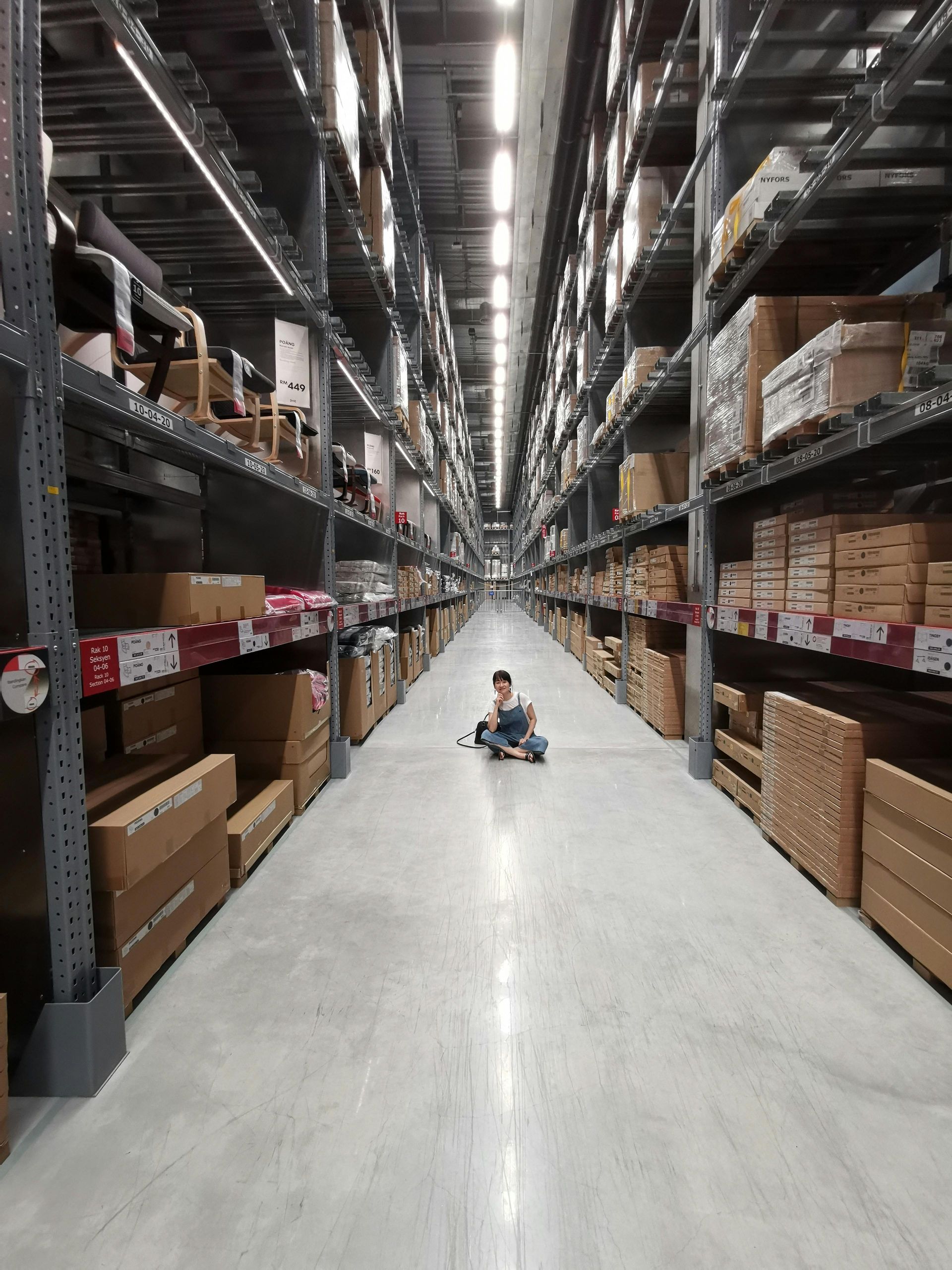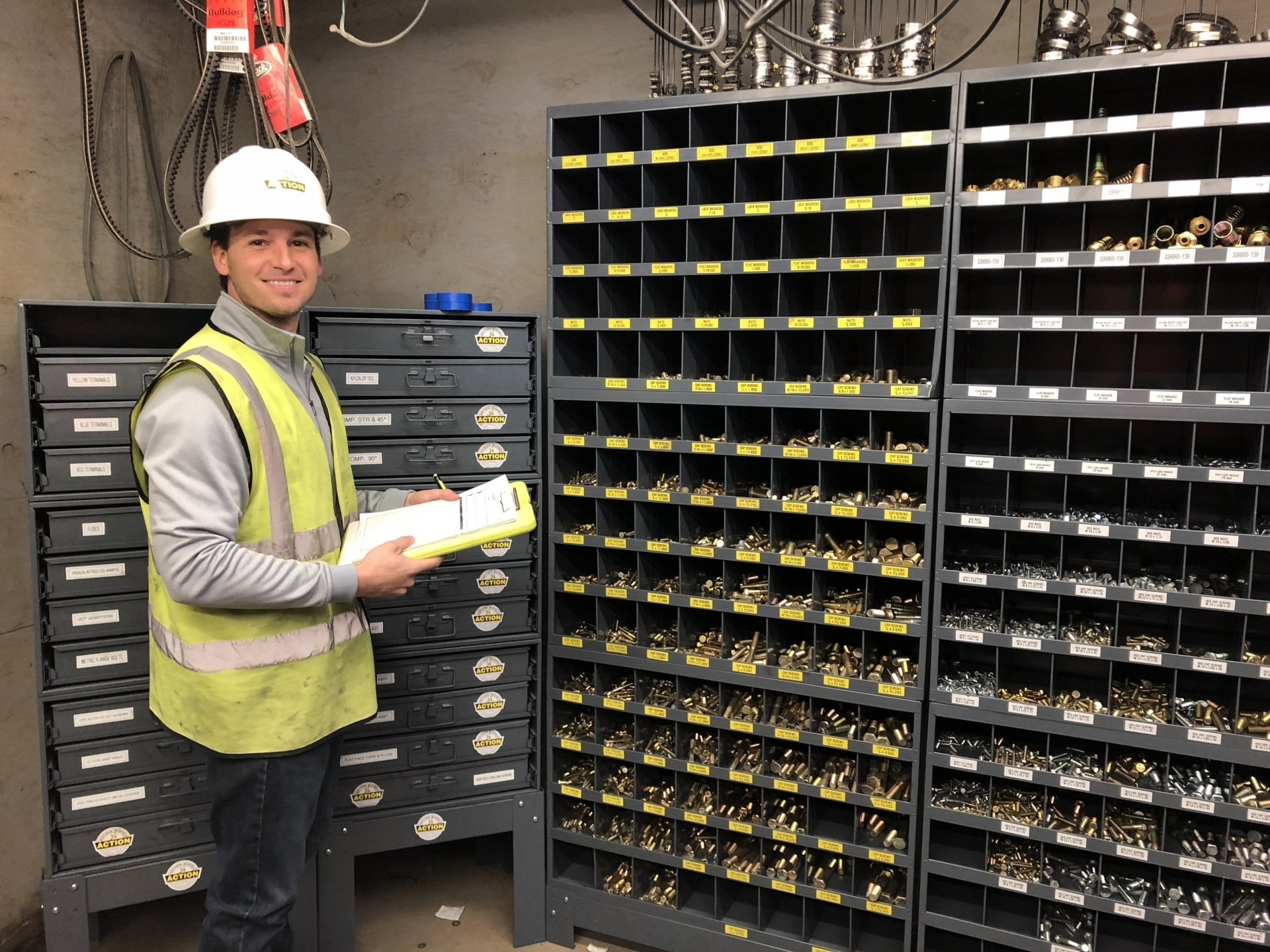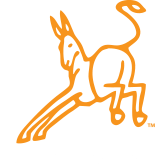Detecting and Fixing Hydraulic Hose Leaks
Hydraulic hose leaks can lead to downtime, costly repairs, and safety hazards. Here is how your team can effectively detect and fix hydraulic hose leaks before they become a large issue.
Detecting Hydraulic Hose Leaks
Detecting a leak early is critical to reducing the overall costs of cleanup, repairs, downtime, and safety hazards. Here are a few ways to actively monitor your systems for the first signs of a leak and ways to pinpoint its location.
Auditory Inspection
Sometimes, you can detect leaks by listening for unusual sounds. These include:
- Hissing or whistling sounds near the hoses that indicate something escaping from a small opening.
- Ticking, rumbles, or high-pitched whining from the machines as air enters or fluid levels fall.
If needed, you can use equipment that amplifies sound to help make detection easier.
Visual Inspection
- Look for oil spots, puddles, or damp areas near the hoses, indicating potential leaks.
- Check for cracked or bulging hoses, as these are common signs of deterioration.
- Check fittings and joints for signs of corrosion
- Gently place a piece of paper or cardboard near the hoses while the system is running. If hydraulic fluid drips onto the paper, it will leave a visible stain
- Use a specialized fluid dye for hydraulic systems. When it passes through the hose, it will escape and make the leak points more visible. Check with our experts to make sure you use a dye compatible with your system.
Pressure and Performance Testing
If you notice decreased or erratic performance in the system, the most common and repairable source of this issue could be a leak. Live detection and monitoring equipment can help you catch these issues in real-time.
If a leak is suspected but not visible, consider pressure testing the hydraulic system to identify the problem area.
Fixing Hydraulic Hose Leaks
Once you've detected a hydraulic hose leak, prompt action is essential. Here's how to fix the issue.
Isolate the System
Shut down the equipment or machinery and turn off the power source to prevent accidentally turning it on during repairs. Isolate the affected area and reduce the excess fluid pressure to prevent spills, puddles, and other hazards.
Replace or Repair
If you choose to patch a small leak with specialized epoxies or stop leak fluids, make sure to treat it as a short-term solution, as the integrity of the hose is already compromised. This should only be done to find a better downtime or to allow time for a replacement part to come in. Larger leaks need to be fully repaired to be fully safe.
Replacements and repairs will depend on the location of the leak and the hydraulic system. Typically, this will involve removing the line, installing a matching line, and making sure all seals and fittings are secure.
- Use high-quality replacement hoses and fittings to ensure longevity.
- Always follow manufacturer recommendations for hose replacement and repair.
- Use the correct tools and techniques to ensure a secure and leak-free connection.
- Contact the manufacturer or your inventory supply experts for questions, troubleshooting, and best practices.
Test the Repairs
After fixing the hydraulic hose, conduct a thorough test to ensure the leak is resolved. Perform regular short-term checks to ensure the repairs are successful, then regular maintenance to continue catching future issues early.
Action Supply Experts Offer Inventory Management and On-Site Hose Assembly
Reduce downtime and costly errors while fixing hydraulic hose leaks with our expert services. We are driven to meet and exceed industry standards with superior equipment that you can trust to perform the way you need it to every time.





